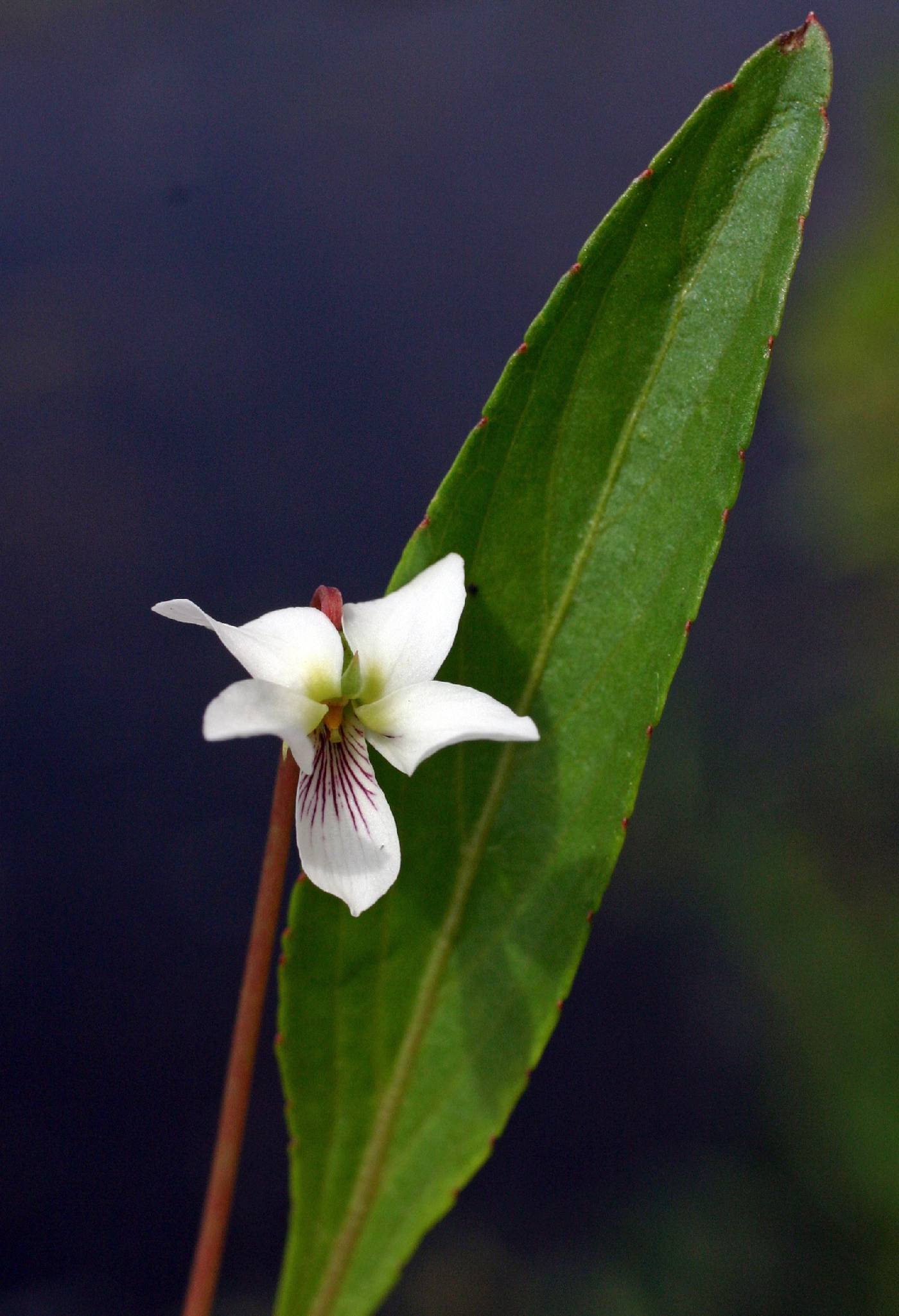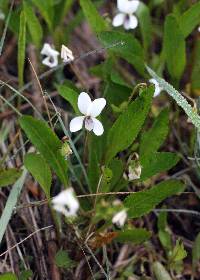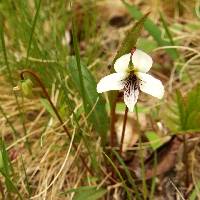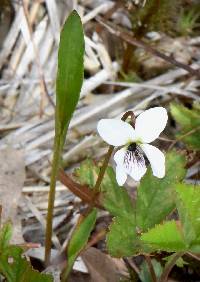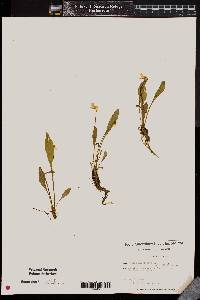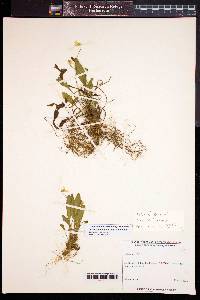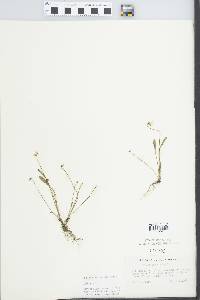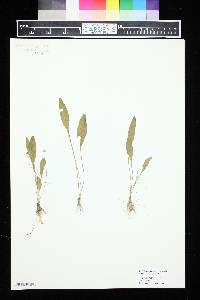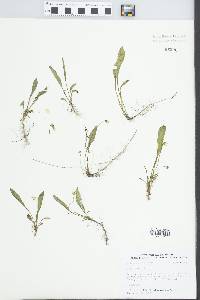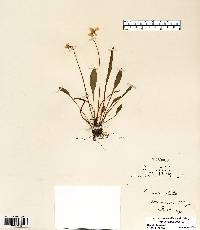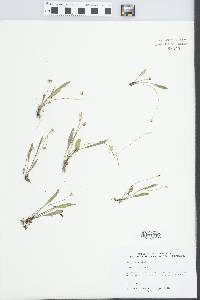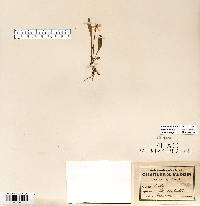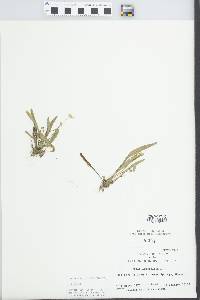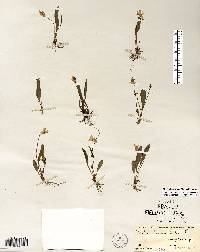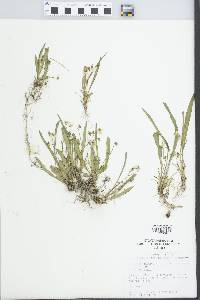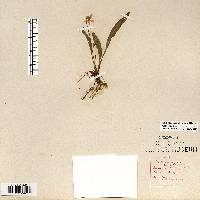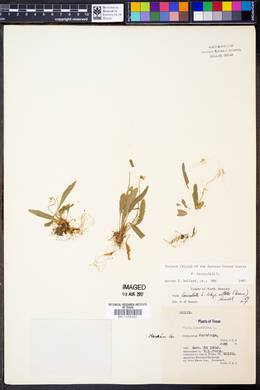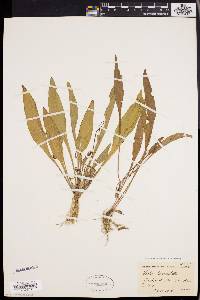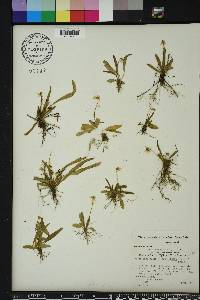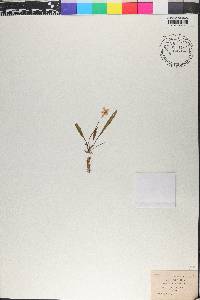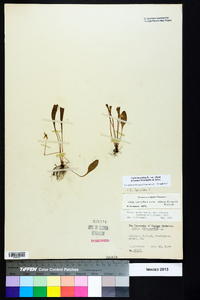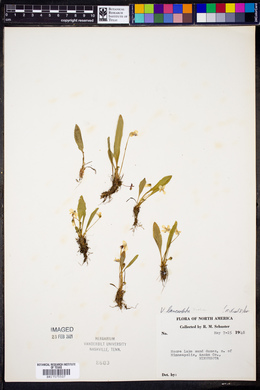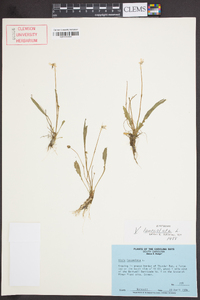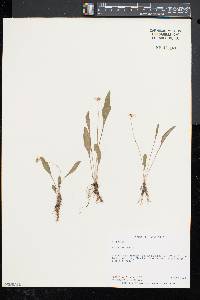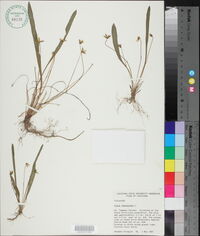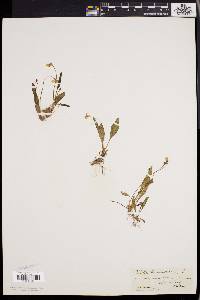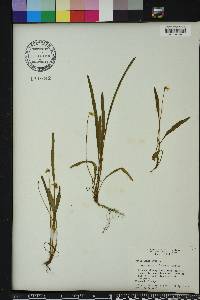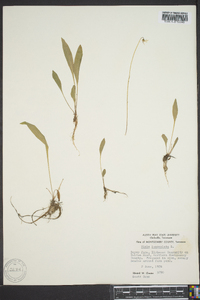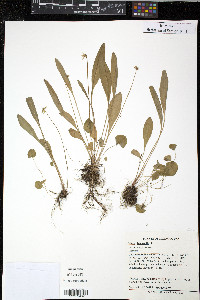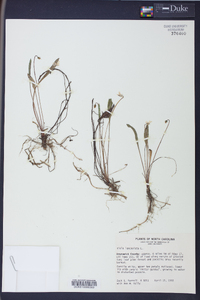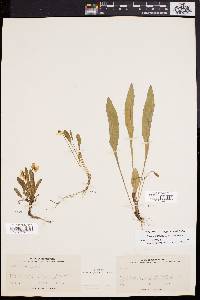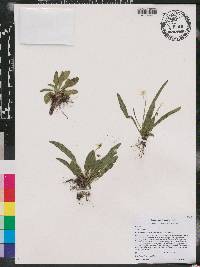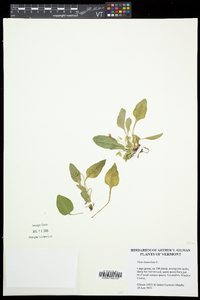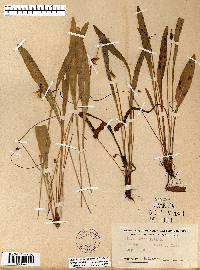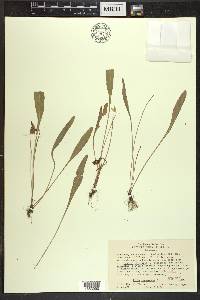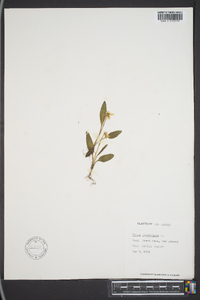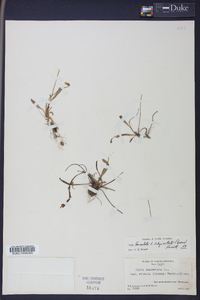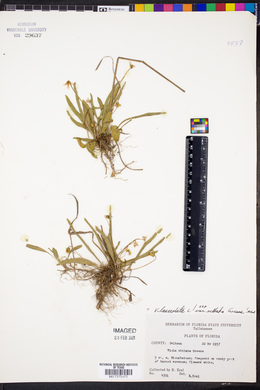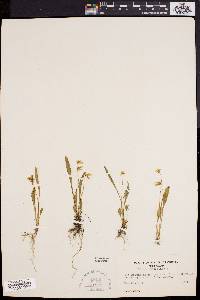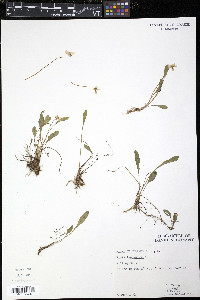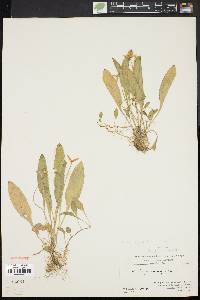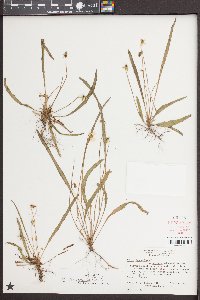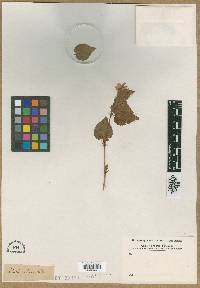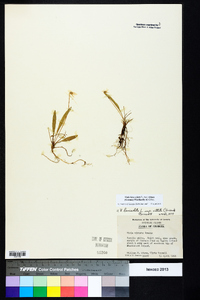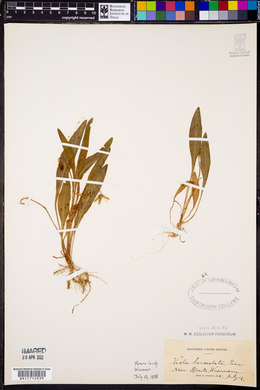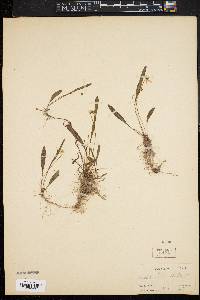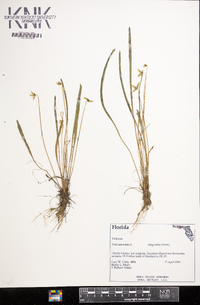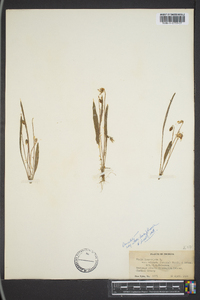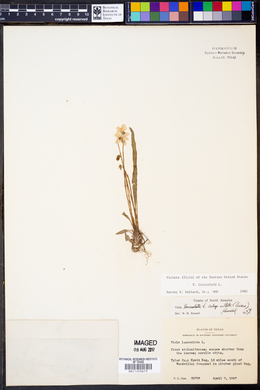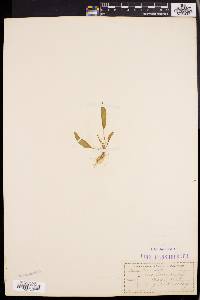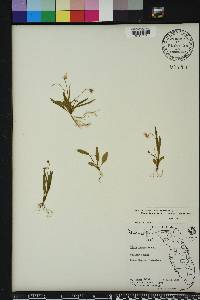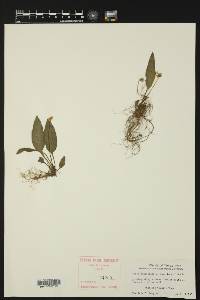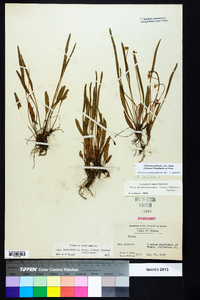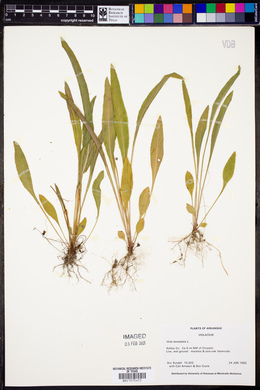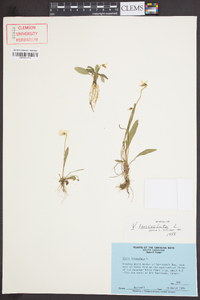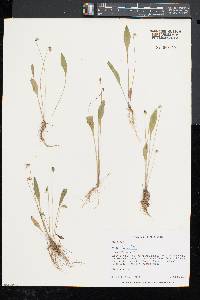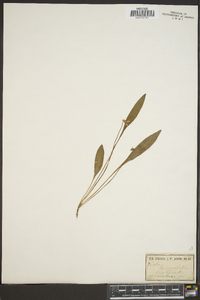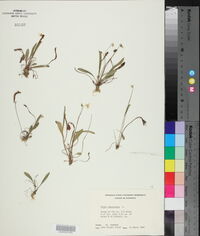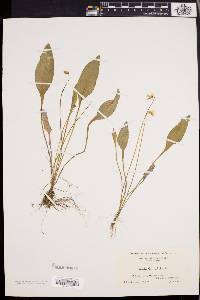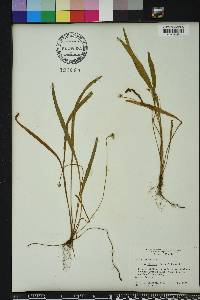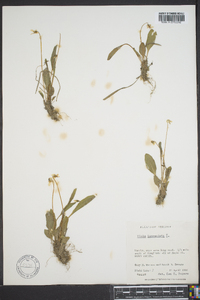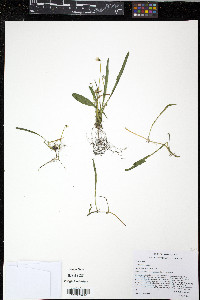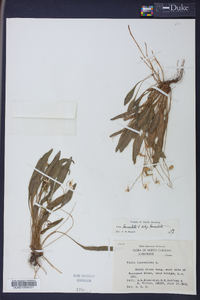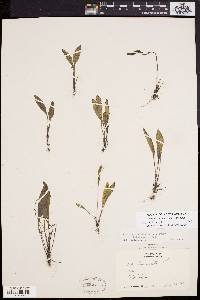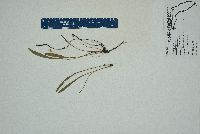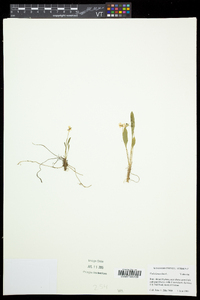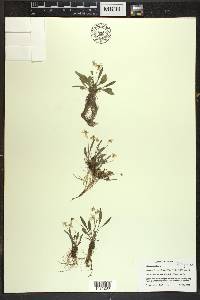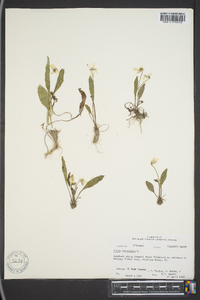Viola lanceolata
|
|
|
|
Family: Violaceae
Bog White Violet, more...lance-leaved violet
|
Perennial herb 7 - 15 cm tall Stem: absent aboveground, leaves and flowers arising independently and directly from a rootstock of slender (under 3 mm diameter) rhizomes and spreading by pale runners (stolons). Leaves: basal, long-stalked, obscurely toothed (round or pointed), usually hairless, 2.5 - 12 cm long, 0.7 - 2.5 cm wide (always longer than wide), lance-shaped to inversely lance-shaped with narrow wedge-shaped base and blunt tip. The winged leaf stalks are often reddish at the base, and the green stipules are usually more than 7 mm long. Flowers: long-stalked (as tall or taller than leaves), white (with some purplish or brownish veins), about 1 - 2 cm long, bilaterally symmetric with two upper petals, two lateral petals, and lower petal with base modified into a rounded nectar spur. In the summer, producing erect stalks terminated by nodding, very fertile flowers that do not open (cleistogamous). Sepals: five, green, lance-shaped with pointed tips, and ear-like appendages (auricles) at the base. Petals: five, separate, all differently shaped, all hairless, the lower three with brown-purple veins near base. The two upper petals are somewhat oblong, and the lowest petal is prolonged at its base into a short, rounded spur or sac. Stamens: five, separate, but very tightly arranged so anthers touch as they surround ovary. The filaments are very short, and the lower two stamens have spur-like nectaries on their backs that extend into the spur or sac of the lower petal. Pistil: with a single-chambered, superior ovary; and a single style that expands into a short, scoop-shaped stigma. Fruit: a many-seeded, green, hairless, 0.5 - 0.8 cm long, ellipsoid capsule opening lengthwise from top. The seeds are brown to olive-colored, plump, 1.4 - 1.5 mm long, and have a large amount of oily endosperm, and often an appendage (aril). Similar species: Viola lanceolata can hybridize with V. macloskeyi ssp. pallens to produce V. x primulifolia, but the hybrid is distinguished by its more egg-shaped leaves with evidently wider bases that may even be somewhat heart-shaped. Viola nuttalli, a more western species that does not occur in the Chicago Region, has similarly shaped leaves as V. lanceolata, but differs by having aboveground stems with yellow flowers arising from the leaf axils. Flowering: April to June Habitat and ecology: Occasional, but most common in the eastern half of the Chicago Region, and always in moist sandy soils such as sandy peaty flats or sedge meadows. Occurence in the Chicago region: native Notes: Plants with very long and narrow (over six times longer than wide) leaves are segregated as V. lanceolata var. vittata, which occurs primarily along the Atlantic Coastal Plain. Some authors have cited specimens along the southern end of Lake Michigan as this variety rather than the typical variety, but most local authorities (Ballard 1994, Swink and Wilhelm 1994) agree that the Chicago Region plants do not exhibit the strong distinguishing characters of the variety as it occurs in the east. Etymology: Viola is the classical name for the genus. Lanceolata means "lance-shaped" in reference to the leaf shape. Author: The Field Museum Acaulescent, glabrous or somewhat hairy, with slender creeping rhizomes, and in summer producing many creeping stolons with cleistogamous fls; lvs narrow, mostly more than 3 times as long as wide, tapering to the base, crenulate to serrate; pet white, the 2 upper linear- oblong or broadly oblong to obovate, the 3 lower with brown-purple veins near the base, all beardless; cleistogamous fls on erect peduncles; frs green, ellipsoid, 5-8 mm; seeds brown; 2n=24. Wet, open places, often along streams and ponds, especially in sandy soil; Me. and N.B. to Fla., w. to w. Ont., Minn., e. Okla., and e. Tex. Apr.-June. Two vars.: Var. lanceolata, with lanceolate lvs mostly 3.5-6 times as long as wide, is chiefly northern, and widespread in our range. Var. vittata (Greene) Weath. & Griscom, with narrower lvs mostly 6-16 times as long as wide, is more southern, occurring chiefly on the coastal plain from Va. to Fla. and Tex., with a disjunct area at the s. end of Lake Michigan. (V. vittata) Gleason, Henry A. & Cronquist, Arthur J. 1991. Manual of vascular plants of northeastern United States and adjacent Canada. lxxv + 910 pp. ©The New York Botanical Garden. All rights reserved. Used by permission. |
|
|
|

